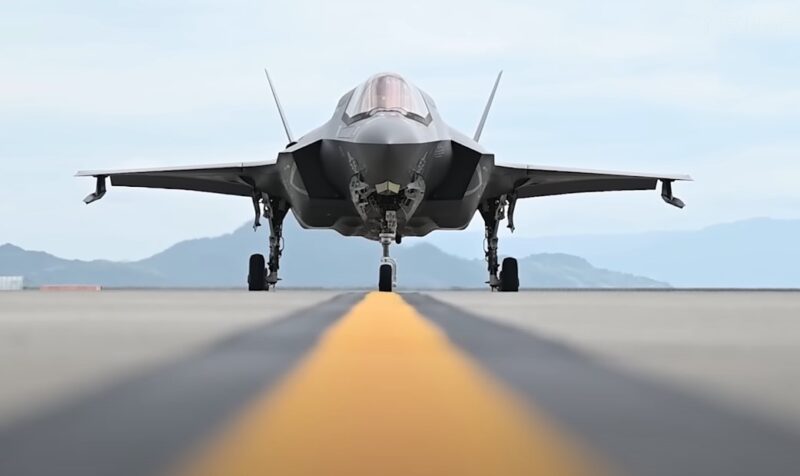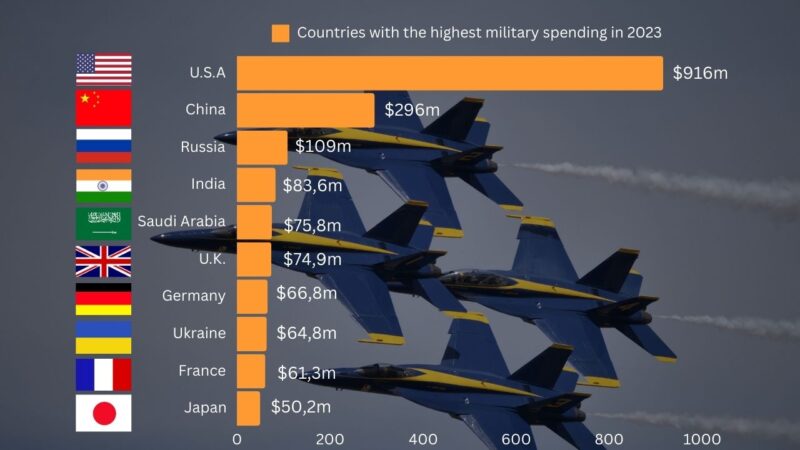The United States maintains one of the largest military budgets in the world, an aspect that shapes not only its defense strategy but also its economic priorities.
Understanding the implications of this enormous expenditure reveals insights into its long-term impact on the country’s future.
That is why we want to talk about the surprising facts about the US military spending you should be aware of.
Key Takeaways:
- The U.S. spent $883.7 billion on defense in 2024, far exceeding other nations. It covers operations, personnel, tech, and global presence.
- High defense spending limits investment in sectors like education and healthcare. Redirecting funds could boost job creation and growth.
- Defense budgets have steadily increased, driven by evolving threats and tech advancements, raising sustainability concerns.
- The 2024 budget targets threats like China’s military, cyberattacks, and aggression from Russia, Iran, and North Korea.
- Defense spending will decline as a percentage of GDP, highlighting the need to balance security with domestic priorities.
- Automation has reduced job creation from defense spending. Investing in civilian sectors could generate more jobs.
- The U.S. spends more on defense than all its NATO allies combined; 53% of the Allies’ combined GDP and 67% of combined defense expenditure.
Table of Contents
Toggle1. The U.S. Military Budget is Enormous
The sheer size of the U.S. military budget is unparalleled. In 2024, the U.S. allocated $883.7 billion, to national defense, a figure that dwarfs the military budgets of many other nations combined, according to Senate.
| Category | Funding (in billions) |
|---|---|
| Department of Defense | $841.4 |
| Department of Energy | $32.4 |
| Defense-related Activities | $0.4 |
| NDAA Topline | $874.2 |
| Defense-related Activities Outside NDAA Jurisdiction | $9.5 |
| National Defense Topline | $883.7 |
- Operational costs
- Personnel
- Technological advancements
- Global military presence
The scale of spending reflects the nation’s emphasis on maintaining global military dominance, but it also brings into question the balance between defense expenditures and other areas of public interest, such as:
- Infrastructure
- Healthcare
- Education
The budget, however, is not solely for traditional military purposes.
It also encompasses cybersecurity initiatives, the modernization of the armed forces, and the development of new technologies aimed at countering emerging threats.
Of course, a significant portion of the budget is used to fund numerous units, like the National Guard.
The significant investment in defense gives the U.S. the flexibility to respond swiftly to global conflicts or threats, but its sustainability is an ongoing debate.
2. Long-Term Economic Trade-Offs

While the military budget supports national security, it creates economic trade-offs that affect other sectors.
- Education
- Healthcare
- Renewable energy
The effect limits the potential for broader economic development and diversification, which could foster innovation and long-term growth.
Moreover, military spending does not generate as many jobs as it once did. Automation and outsourcing have diminished its effectiveness in job creation.
Investing in civilian sectors, such as renewable energy and infrastructure, would create more jobs and contribute to the overall growth of the economy.
Shifting funds to these areas would enable the U.S. to build a more resilient and versatile economic foundation, ensuring sustainable growth and reducing dependency on defense-related industries.
3. Historical Growth in Defense Spending

The U.S. defense budget has seen significant growth over the decades, with spending increasing dramatically since 1980. According to the Stimson Center, it rose by 50% from the start of the 21st century.
The growth reflects the changing nature of global security threats, technological advancements, and the need to maintain a powerful military presence worldwide.
Although the U.S. continues to spend more on defense than any other nation, the share of the federal budget allocated to defense has varied over time, peaking during periods of heightened conflict and gradually decreasing in recent years.
Despite this fluctuation, the overall trend has been an upward trajectory, driven by evolving global threats and the need to maintain strategic superiority. However, the long-term sustainability of such high levels of military expenditure remains a concern.
4. Focus on Specific Geopolitical Threats

The 2024 defense budget is designed to address specific geopolitical threats, reflecting the ever-changing global security.
According to Rand Corporation, key priorities include countering the growing military presence of China, deterring potential attacks on U.S. allies, and combating threats from cyberattacks, which have become an increasing concern in the modern era.
The focus on particular threats illustrates the shifting nature of military strategy in the 21st century.
Rather than focusing solely on conventional warfare, the U.S. is expanding its military strategy to encompass cybersecurity, technological advancements, and new arenas of conflict.
A strategic shift requires not only financial investment but also coordination with international allies to maintain global security.
Interesting Fact: In 2023, total global military expenditure touched $2.443 billion, which is 6.8% higher than in 2022.
5. A Declining Share of GDP

Despite its large size, the share of U.S. military spending as a percentage of GDP is projected to decline over the next decade, and it will reach 2.5% in 2034.
The trend indicates that while defense remains a priority, it will take up a smaller portion of the nation’s overall economic output. Defense spending has accounted for a larger percentage of the GDP, particularly during periods of intense conflict.
However, the projected decrease in defense spending relative to GDP raises questions about the sustainability of current expenditure levels and whether adjustments need to be made in response to future economic conditions.
The U.S. will need to carefully balance its defense priorities with its economic growth and domestic spending needs. A challenge requires strategic planning to ensure that national security remains robust while allowing for investments in areas that support long-term economic stability.
6. More Jobs in Other Sectors

The job market associated with military spending has shrunk considerably since its peak in the 1980s.
Employment in arms-related industries has dropped sharply due to the rise of automation and outsourcing. The decline means that military spending no longer serves as the strong driver of job creation that it once did.
Redirecting funds toward sectors like infrastructure, green energy, and technology could generate more employment opportunities, contributing to broader economic growth.
Investments in civilian industries typically create a higher number of jobs per dollar spent compared to military investments.
Green technologies, for example, are not only more labor-intensive but also offer long-term benefits in terms of sustainability and innovation.
7. The U.S. Outspends its Allies Dramatically

In comparison to its allies, the U.S. defense spending stands in stark contrast. It invests more in defense than all other NATO members combined, underscoring its dominant role in global military affairs.
- 53% of the Allies’ combined GDP
- 67% of combined defense expenditure
An outsized spending raises questions about the allocation of responsibilities within international defense alliances and the financial burden placed on the U.S.
While this level of spending enables the U.S. to maintain a global military presence, it also sparks debate about whether other nations should contribute more to collective defense.
The disparity in defense spending reflects both the global leadership role and the different strategic priorities of its allies.
Not only that, but we can see that the US Army actively provides its allies with gear, equipment, and vehicles, like tanks, helicopters, and airplanes.
However, balancing national security needs with global collaboration remains a delicate issue that will continue to shape defense policy in the future.
Methodology
The methodology for this report on U.S. military spending involved a comprehensive analysis of available data from multiple reliable sources.
The research process began with gathering information from official government publications, including the U.S. Government Accountability Office, the Peter G. Peterson Foundation, and NATO’s annual reports, to understand the scale and scope of defense budgets.
These documents provided factual insights into the allocation of funds, the breakdown of expenditures, and historical spending patterns.
The report examined economic analyses from research institutions like the Rand Corporation and the Stimson Center to explore the broader economic implications of defense spending.
Economic journals, such as those found on platforms like SpringerLink and ScienceDirect, were also reviewed to understand the relationship between defense expenditures, job creation, and economic growth.
The research included a review of global military expenditure reports, such as those published by the Stockholm International Peace Research Institute, to contextualize U.S. spending within the global framework. Comparative studies with other nations, especially NATO allies, were essential for illustrating the disparities in defense contributions and responsibilities.
Historical data trends were analyzed to highlight shifts in spending priorities and the evolution of military strategies, particularly in response to emerging geopolitical threats from nations like China, Russia, Iran, and North Korea.
Summary
The U.S. military budget, while essential for national security, presents significant economic trade-offs and long-term challenges.
As geopolitical threats evolve, so too must the strategy for balancing defense with other pressing domestic priorities.
Sources
- Senate – Summary of the Fiscal Year 2024 National Defense Authorization Act
- Al-Jazeera – US military presence around the world
- U.S. Government Accountability Office – Army Modernization
- Rand Corporation – How Does Defense Spending Affect Economic Growth?
- The Nation – Military Spending Isn’t the Economic Galvanizer You Think it Is
- Stimson – Current Defense Plans Require Unsustainable Future Spending
- SpringerLink – What is the long-run relationship between military expenditures, foreign trade and ecological footprint?
- Rand Corporation – Developing a U.S. Strategy for Dealing with China
- TheConversation – How US military planning has shifted
- Global Conflict Tracker – Confrontation With Iran
- ICAN – Nuclear tensions keep rising on Korean Peninsula
- Stockholm International Peace Research Institute – Global military spending surges amid war, rising tensions and insecurity
- Peter G. Peterson Foundation – The United States Spends More on Defense than the Next 9 Countries Combined
- UVM – Employment Effects of the Rise and Fall in Defense Spending
- ScienceDirect – Putting renewables and energy efficiency to work
- NATO – The Secretary General’s Annual Report 2023
Related Posts:
- Are Soldiers Spending Too Much Time on After Action Reports?
- Is Ibiza Safe in 2025? What You Need to Know Before You Go
- Can You Join the Army with Scoliosis? What You Need…
- Everything You Need to Know About Military Mental…
- Military Base Camp Rules and Regulations - What You…
- How Far is a Klick in The Military? What Do You Need to Know







